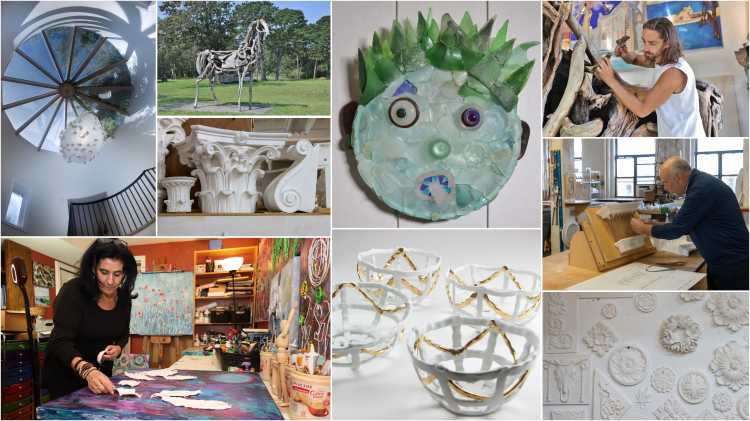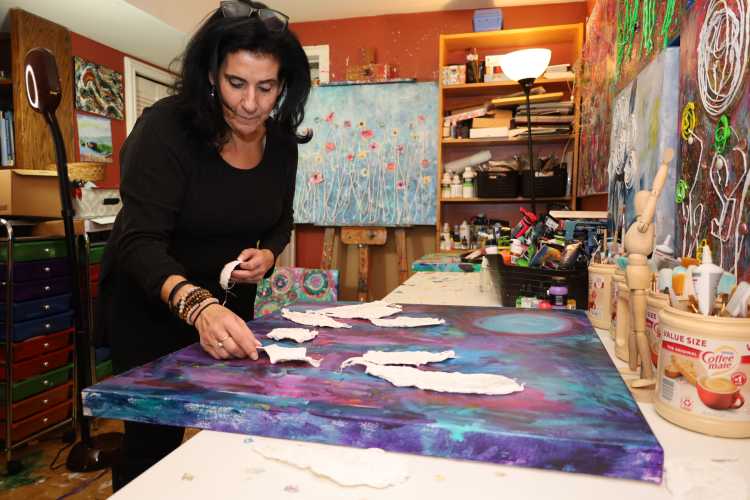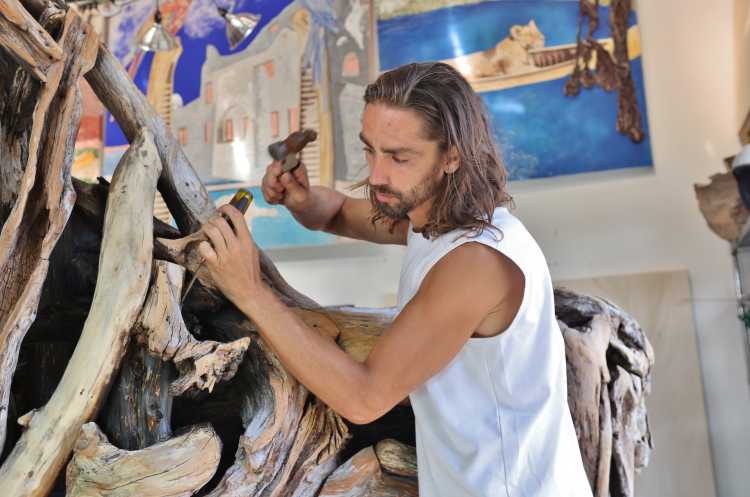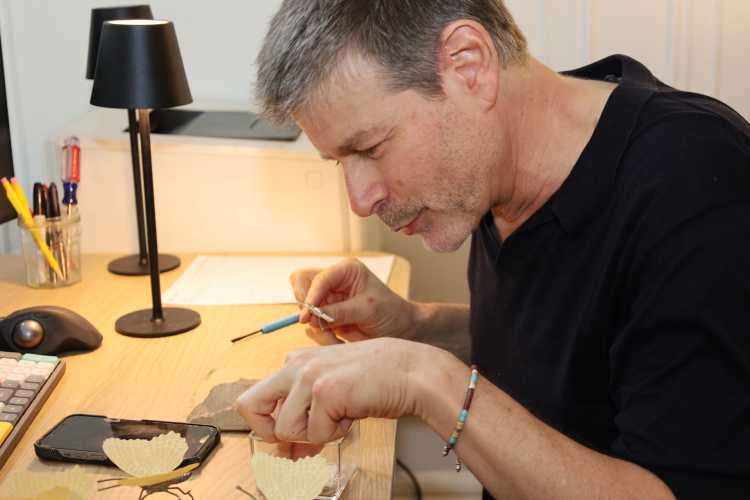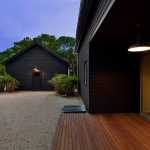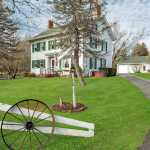In the Ceramics Art Studio at Columbia University Teachers College in Upper Manhattan, there’s a downdraft gas kiln – a very large, very powerful oven. This particular kiln is capable of generating an internal temperature of 2,400 degrees Fahrenheit.
At that temperature, organic material (wood, paper, cotton, silk, etc.) vaporizes almost instantly. Aluminum quickly melts into a puddle. So does copper, albeit a bit more slowly. If by some miracle a human being could experience what 2,400 degrees felt like and live to tell about it, they might say it was like standing inside the beating heart of an active volcano – or like getting hit with a fiery blast from the throat of Drogon, the biggest and baddest of Daenerys Targaryen’s three dragons in Game of Thrones.

Unlike a lot of less robust substances, clay and the materials used to create ceramic glazes (silica, alumina, flux) do not vaporize or melt away completely at 2,400°F. Instead, they transform at the molecular level, undergoing something of a magical alchemy. They get reconfigured and reborn in a new form that’s stronger, more permanent, and often, much more beautiful.
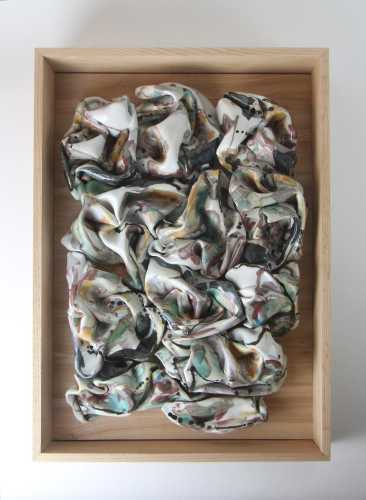
Artist and educator Laurie Densen has logged many hours at the Columbia studio, first as a student, then later as a studio monitor and a working ceramicist. Densen will tell you that extreme temperatures sometimes affect glazed clay in unpredictable ways.
“The glazes will do mysterious, unexpected, dynamic things,” she says.
“It took me two years to figure out how to keep these vessels from just melting and collapsing,” she adds, gesturing to a small collection of her finished work.
Welcome to the world of high-fire ceramics.
When she’s not creating ceramics at the Columbia Teachers College studio, Densen teaches art at Collegiate School, an all-boys private school on Manhattan’s Upper West Side. While she has taught at virtually all grade levels at the venerable K-12 institution, she says she thinks of herself primarily as a middle school teacher these days.
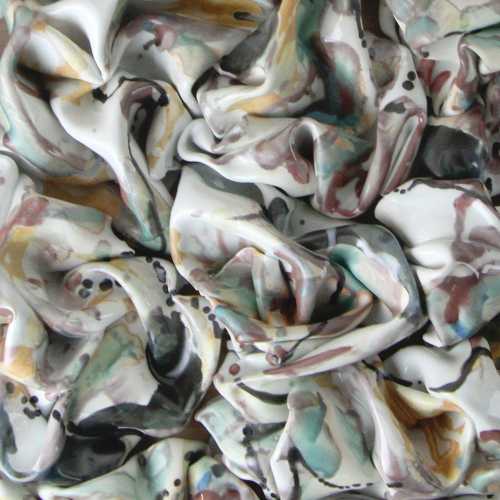
“My background as an art educator is in material exploration,” she explains. “I help students manipulate a material to show something – to make meaning in some way. And I think that really influences what I make now. For the last 10 years, I’ve been trying to push the boundaries of mostly high-fire porcelain. What can it structurally sustain? What can I get it to do?”
Densen, who spends a good portion of her summer at her family’s second home in East Hampton and commutes into Manhattan from Dobbs Ferry when school is in session, is currently working on an idea that she’s been thinking about for a while. In essence, she is interested in creating pieces that emulate the visual characteristics of fiber.
“What is it about fiber that I’m trying to imitate?” she asks. “I think it’s about the movement and the dynamic nature of the material – about capturing a moment in time.”
“If you imagine sheets hanging out to dry and the wind passing through them, I want to make that in clay at a really large scale,” she continues. “The idea of a clothesline of porcelain billowing in the wind has stayed with me. Pushing the boundaries of what the clay itself as a material can do has always interested me. And I think the clothesline concept came out of that.”
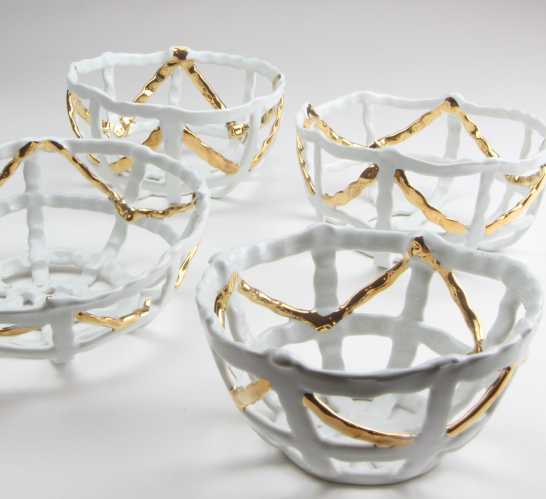
Her focus on emulating the characteristics of fiber with clay have so far led her toward ceramic wall art. Rather than bowls or pots or receptacles of some kind, many of her recent creations are designed simply to be looked at – to be displayed on their own as decorative art.
“I am not a painter, but the clay emboldened me to make purely decorative clay paintings,” she says.
Densen acknowledges that there are still technical hurdles and complexities of scale to overcome in order for her to achieve the exact effect she’s after. But she’s getting closer all the time.
“They don’t feel like wind is blowing through the clay,” she says, describing the elements of one of her recent wall pieces. “But they do feel like fabric – like crumpled sheets of clay.”
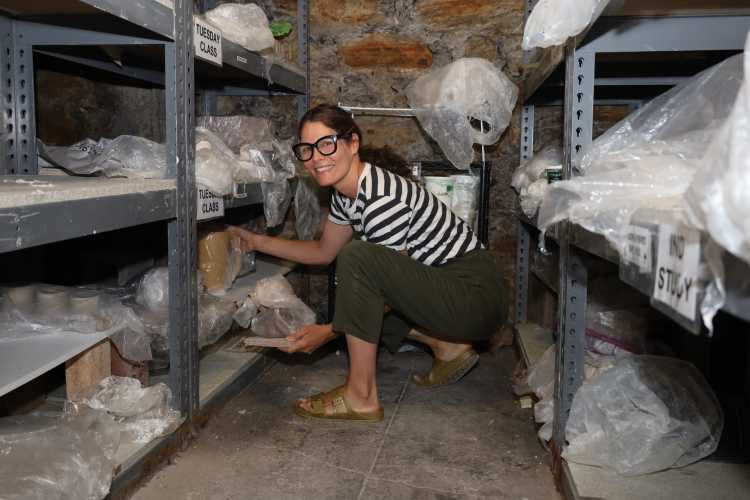
Densen’s creations can be found in private collections and group shows focusing on ceramics in the Hudson Valley and New York City. A deeper dive into her work is available at lauriedensen.com.
Watching Densen demonstrate how she prepares a piece of clay for the kiln sometimes feels a lot like observing a master pastry chef at work. Cooking imagery is everywhere at the studio. Rolling pins of many sizes hang on the wall, and various tools for cutting and shaping and rolling clay that could easily pass for food-prep utensils are always within arm’s reach.
Densen also makes extensive use of baker’s piping bags in her work. As she squeezes her piping bag to apply a carefully apportioned layer of clay to the interior walls of what might become an intricately textured porcelain bowl, she could easily be measuring out, say, chocolate ganache to glaze a tray of profiteroles. And of course, there are the ovens themselves. In addition to the downdraft glass kiln, the studio also boasts three Skutt electric kilns, which, like their gas-powered cousin, can produce maximum temperatures that are hard to fathom.
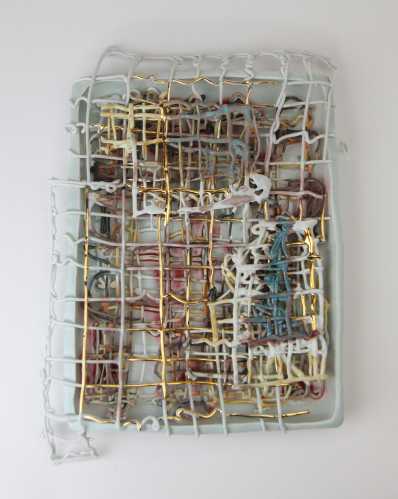
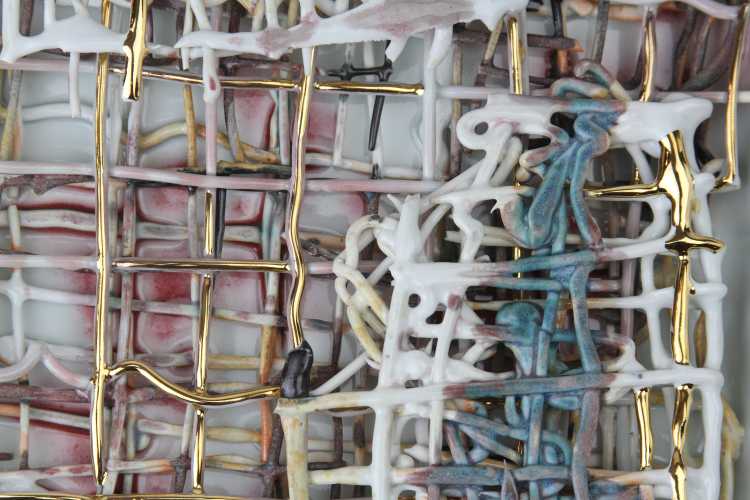
As both a working ceramicist and a full-time teacher at a prestigious Manhattan private school, Densen is in a unique position to influence how her students perceive the nature of her craft.
“Yes, there is structure, and yes, there are objectives I want them to draw on for a project,” she says of her students. “But I definitely aspire to give them a lot of leeway. That’s absolutely a guiding light for how I try to teach.”
Densen points out that people of all ages tend to be fascinated by the kiln-firing process. The sheer intensity of the heat alone is compelling. But as anyone who has ever slid a piece of clay into an oven understands on some level, the searing heat from a high-fire ceramics kiln doesn’t simply cook; it reconstructs. The piece that emerges from the kiln is a completely different object than the one that went into it.
And for students, the raw clay itself has its own kind of allure.
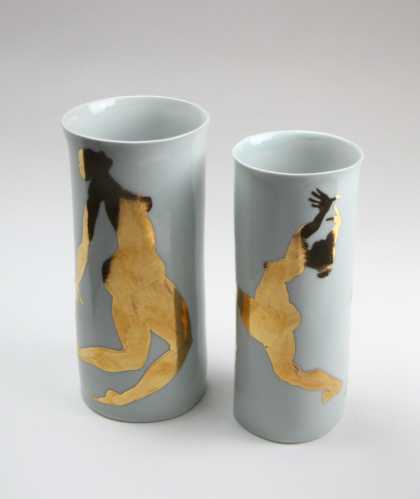
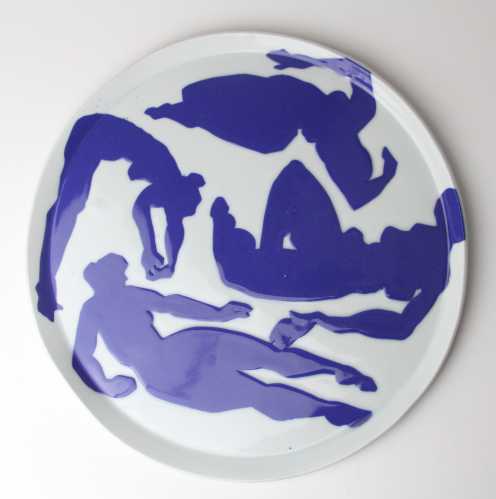
“The things that I think speak to students immediately about clay are the same things that speak to me about it,” she says. “It’s the way it feels in your hands, the physicality of working with it. It’s very responsive to your ideas, and it’s so obedient in many ways. But it also poses these challenges in engineering, which I think frustrates and intrigues students.”
Though she grew up in Riverdale and recently moved to Westchester, Densen spent three decades living in Manhattan. Summers on the East End have been a constant in her life since she was young. She and her sister, who is also a teacher, co-own and share what was originally their parents’ home in East Hampton.
“So many of my clearest childhood memories are there with my siblings at that house,” she says. “We have six kids between us. And they’ve grown up clamming, crabbing, fishing, doing all the things I did as a child. That’s very important to us.”
Nostalgia and family aside, the Hamptons tend to have a particularly powerful appeal to those who love to create. And Densen is no exception.
“If you look at the raw material of the East End and the variety of water bodies, flora, fauna, it’s just a breathtakingly beautiful place,” she observes. “It’s my childhood second home, so I know it’s summer when the morning doves come out… even the wind sounds different in different seasons when it blows through my house.”
This article appeared in the August 15, 2025, edition of Behind The Hedges in Dan’s Papers. To read the full digital edition, click here.


